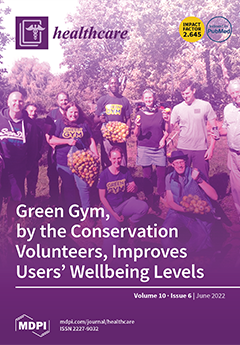Background:
Helicobacter pylori (
H. pylori) infection causes gastritis, duodenal and gastric ulcers, and gastric cancer.
H. pylori eradication efficacy is low worldwide, and antibiotic resistance is the leading cause of therapy failure; therefore, this study was performed to determine the characteristics
[...] Read more.
Background:
Helicobacter pylori (
H. pylori) infection causes gastritis, duodenal and gastric ulcers, and gastric cancer.
H. pylori eradication efficacy is low worldwide, and antibiotic resistance is the leading cause of therapy failure; therefore, this study was performed to determine the characteristics of antibiotic resistance of
H. pylori in children with gastritis, duodenal and gastric ulcer. Methods: A cross-sectional study was conducted on 237 pediatric patients diagnosed with gastroduodenal inflammation and ulcer at two hospitals in Vietnam from March 2019 to April 2022. Pediatric patients with positive
H. pylori tests continued to do E-tests to measure the minimum inhibitory concentration of the antibiotic so that we could prescribe effective antibiotics based on the sensitivity. Results: In 237 pediatric patients (51.1% males) with a median age of 10.3 years (range 5–16 years), endoscopic images showed that inflammatory lesions and peptic ulcers accounted for 69.2% and 30.8%, respectively. Resistance rates of
H. pylori were 80.6% to clarithromycin (CLR), 71.7% to amoxicillin (AMX), 49.4% to metronidazole (MTZ), 45.1% to levofloxacin (LEV), and 11.4% to tetracycline (TET); dual resistance to AMX + CLR was 64.2%, AMX + LEV 35%, AMX + MTZ 33.3%, CLR + MTZ 32.5%, and TET + MTZ 7.2%. The frequency of clarithromycin resistance was significantly increased, particularly in pediatric patients who had received prior
H. pylori treatment. The percentage of amoxicillin resistance increased with age; amoxicillin resistance of
H. pylori was more prevalent among pediatric patients with peptic ulcers than those with gastroduodenal inflammation and higher in males than females. Conclusions: The proportions of resistance to CLR, AMX, MTZ, and LEV were extremely high, in contrast to TET, which was lower in pediatric patients. Our study suggests that the standard triple therapy with CLR should be limited as the empiric therapy for pediatric patients, and we should consider using eradication regimens with TET for children over 8 years of age if the medical facility is not qualified to perform antibiotic susceptibility tests of
H. pylori in the Mekong Delta.
Full article






